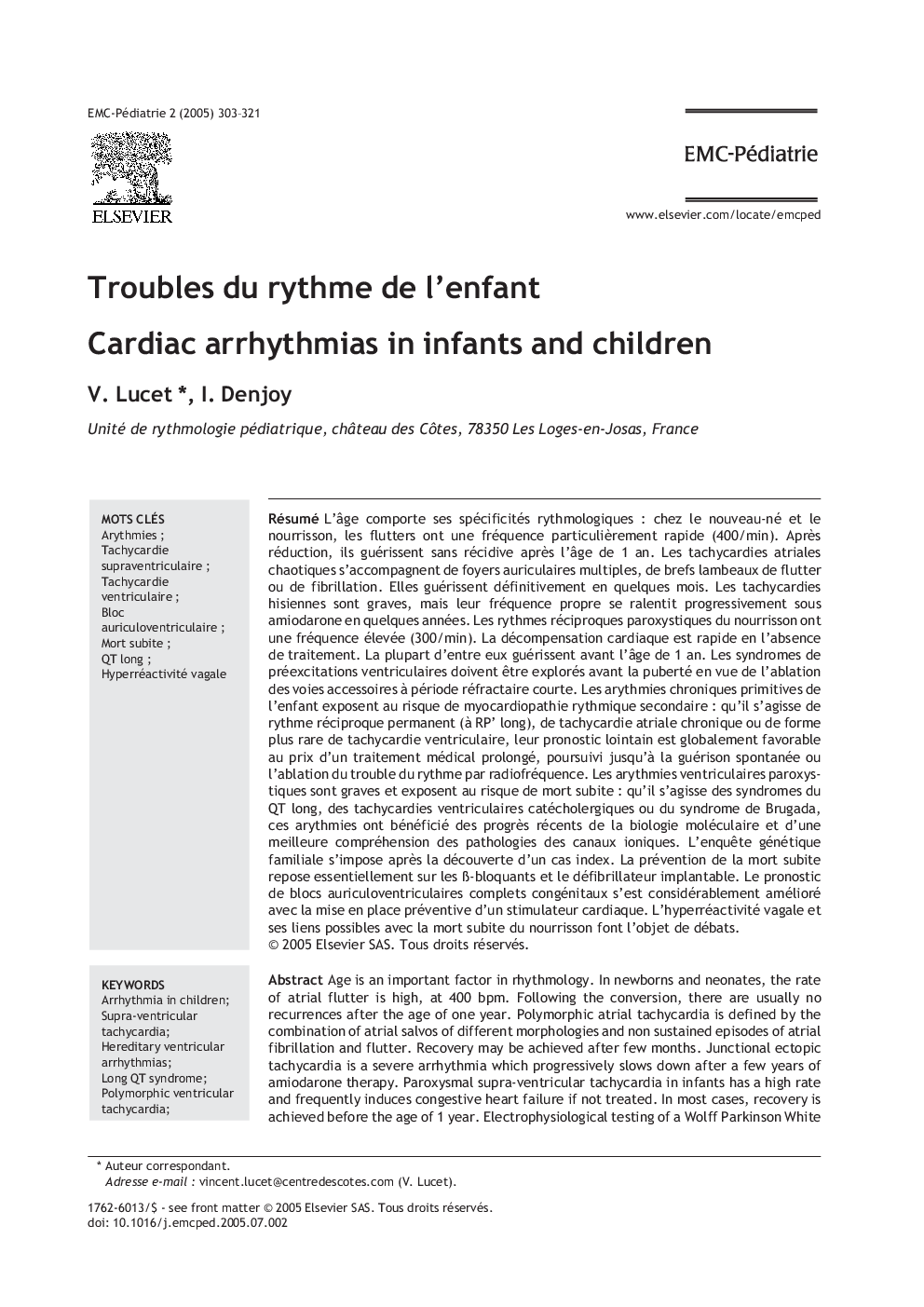| Article ID | Journal | Published Year | Pages | File Type |
|---|---|---|---|---|
| 9373025 | EMC - Pédiatrie | 2005 | 19 Pages |
Abstract
Age is an important factor in rhythmology. In newborns and neonates, the rate of atrial flutter is high, at 400 bpm. Following the conversion, there are usually no recurrences after the age of one year. Polymorphic atrial tachycardia is defined by the combination of atrial salvos of different morphologies and non sustained episodes of atrial fibrillation and flutter. Recovery may be achieved after few months. Junctional ectopic tachycardia is a severe arrhythmia which progressively slows down after a few years of amiodarone therapy. Paroxysmal supra-ventricular tachycardia in infants has a high rate and frequently induces congestive heart failure if not treated. In most cases, recovery is achieved before the age of 1 year. Electrophysiological testing of a Wolff Parkinson White pattern may be a valuable tool, before the age of twelve. Prophylactic radiofrequency ablation of accessory-pathway with shorter refractory periods is advisable. Primary chronic arrhythmias, such as permanent junctional reciprocating tachycardia, chronic atrial tachycardia, or some forms of ventricular tachycardia, can be complicated by tachycardia-induced cardiomyopathies in children. Long-term prognosis is favourable provided long term medical therapy is undertaken, or ablation. Many paroxysmal ventricular arrhythmias have a poor prognosis due to the risk of sudden death. Molecular biology has allowed improving the knowledge and pathophysiology of hereditary ventricular arrhythmias such as long QT syndrome, Polymorphic Ventricular Tachycardia and Brugada syndrome. In case a child is affected by one of these syndromes, all family members should be tested both clinically and genetically. Prognosis of congenital complete atrio-ventricular block and paroxysmal vagal overactivity is discussed.
Keywords
Related Topics
Health Sciences
Medicine and Dentistry
Perinatology, Pediatrics and Child Health
Authors
V. Lucet, I. Denjoy,
